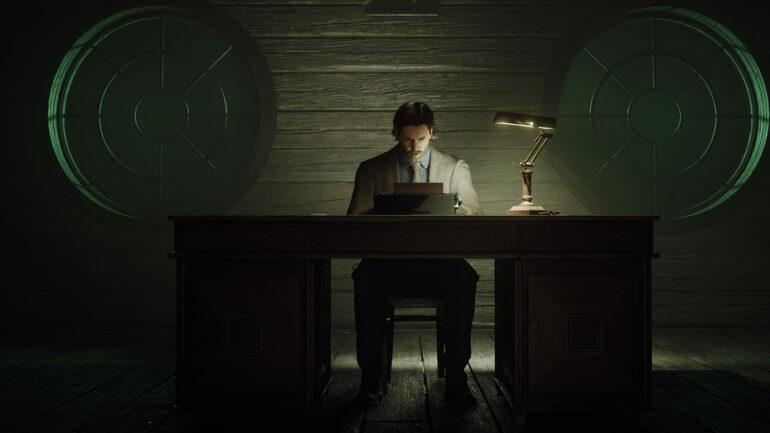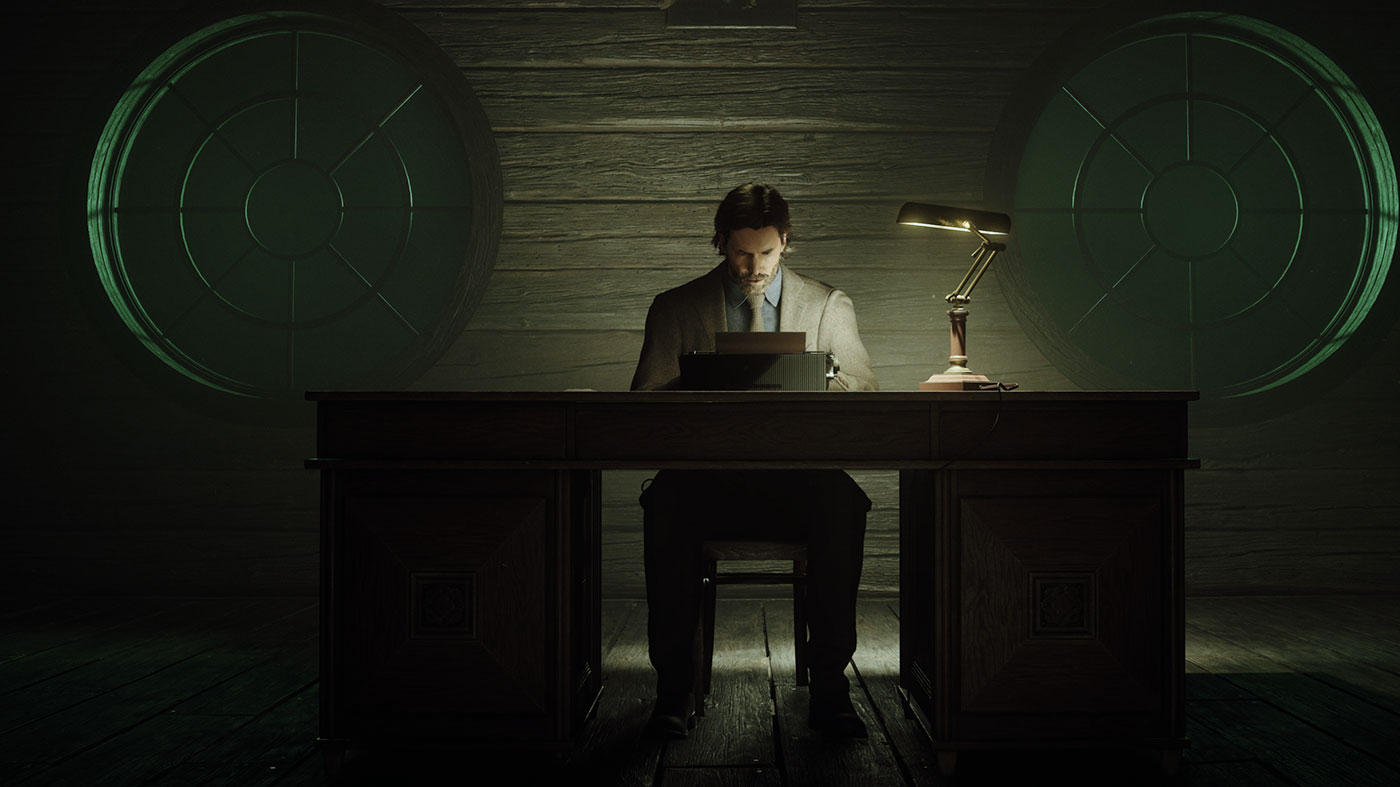The thing about mysteries like Alan Wake is that they are built on a bedrock of chaos, where reason and order is never quite in arm’s reach. In principle, as in most stories about conflict, it’s the warring forces of light and dark wrestling for control, with agents on both sides tossing rocks back and forth in the name of bedlam. But when a hopeful ellipsis turns into a thirteen-year absence, as is the case with Alan Wake, things can’t exactly continue as they were.
It’s hard to pick up the same old rocks and believe that’s worth the wait. So while we’re still picking at the same narrative threads and still brandishing the sturdiest flashlight of them all, the darkness in Alan Wake’s story has had time to fester and grow more extreme. This significant shift in tone has definitely informed a far darker story, and a far more sinister game in Alan Wake II.
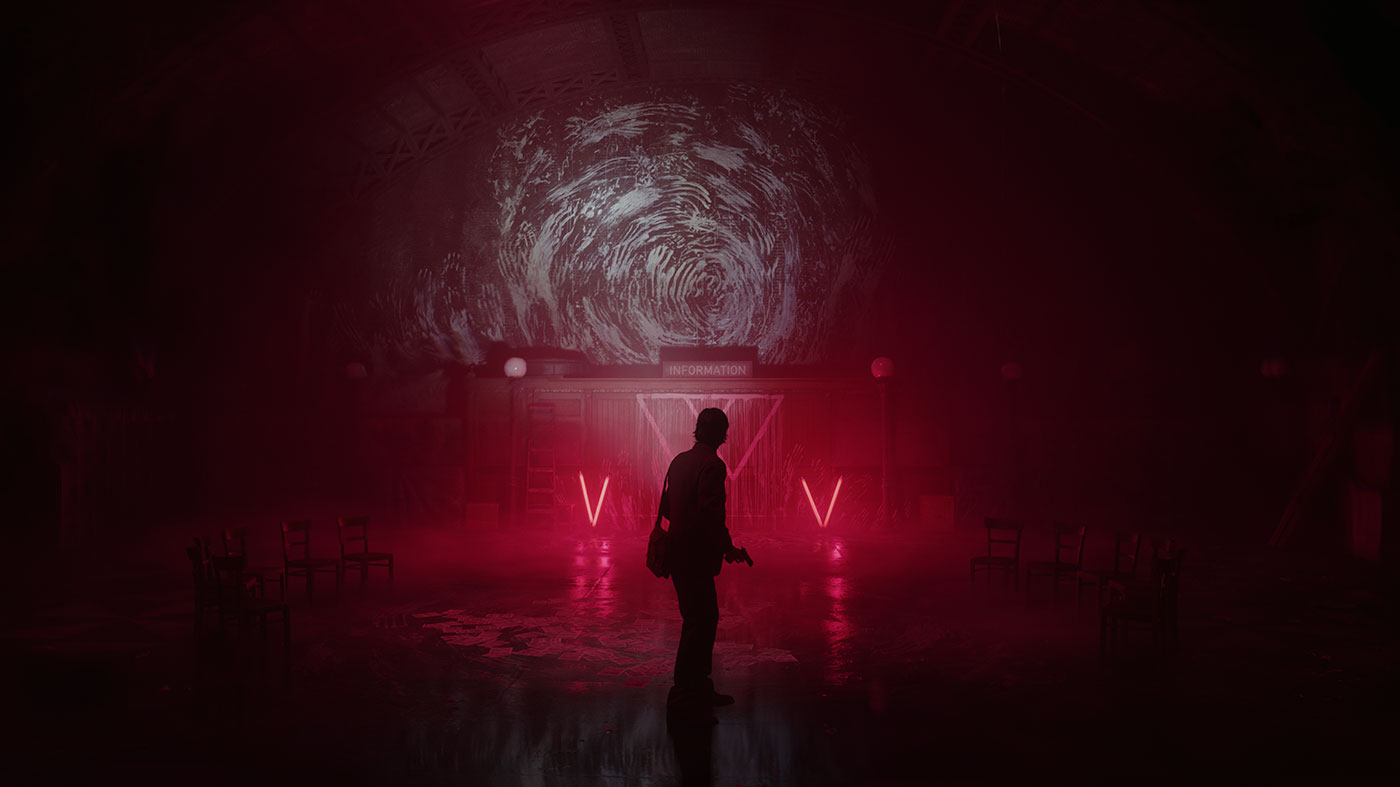
Saga Anderson, one of the game’s co-protagonists, arrives in Bright Falls after a string of connected, ritualistic murders plague the harbourside town. The evidence points towards a cult being behind these violent delights, though as pages for a manuscript begin to manifest once again, things take a stranger turn. Before long, the link to missing writer Alan Wake is made, and the nature of his disappearance thirteen years prior and Saga’s case collide in a spectacular duelling narrative. It has been suggested throughout the game’s promotional tour that it can be appreciated on its own merit, and I think that might be half right.
The impact of Wake’s attempt at escape from The Dark Place on Saga’s life, both professional and personal, is profound and it’s perhaps the most accessible thread to follow for those who didn’t play Alan Wake. But the stories you find in this sequel tie back to Remedy’s connected universe in such clever ways, that not having a context for all of it would be a huge shame. So I do think that both Control and the original Alan Wake are required reading here.
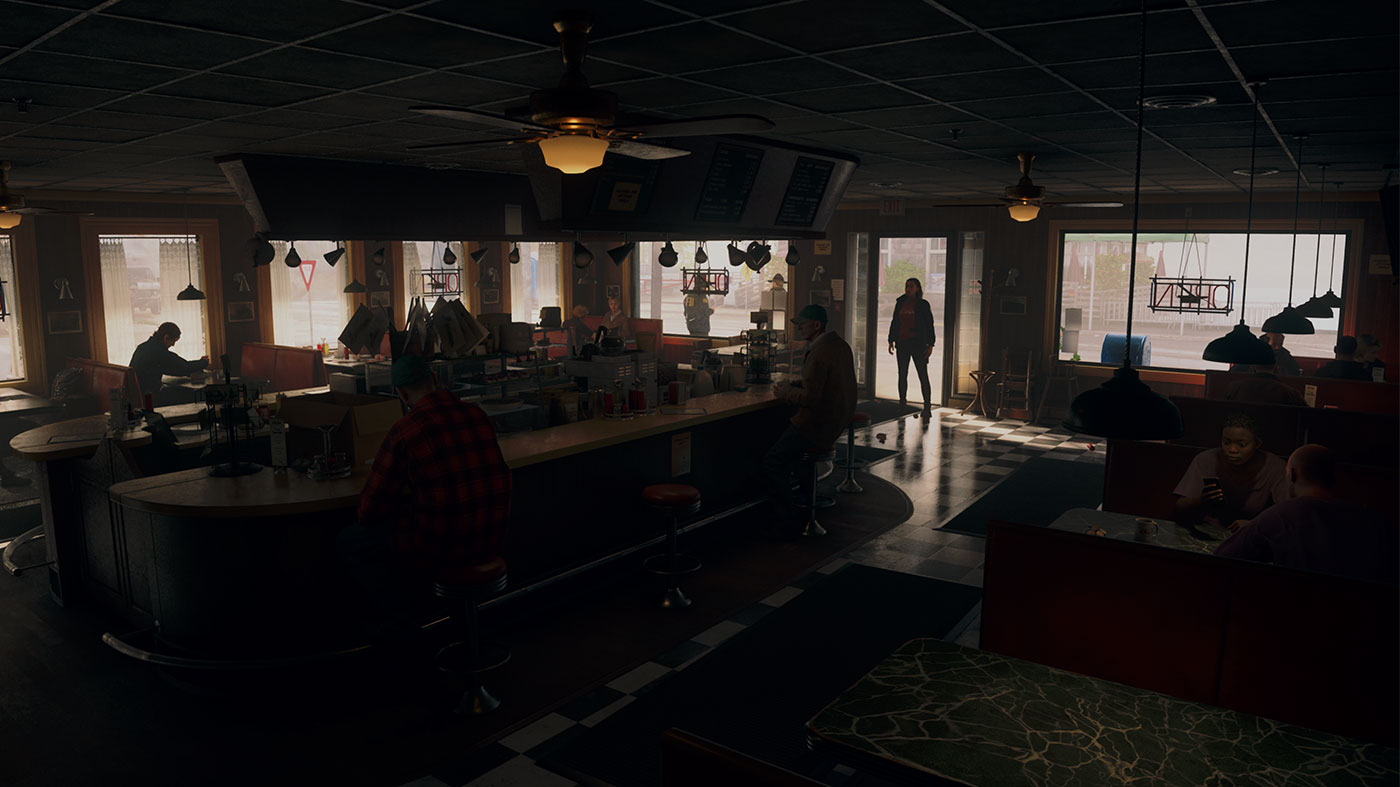
I won’t delve deeper into story beats because it deserves to unfold for players organically, though the radically different twin stories both converge and intertwine so wonderfully, it’s quite an achievement. It’s one part true crime thriller, one part mind-bending horrorscape, but it also has a sense of humour about itself. Whether it’s Sam Lake’s meta performance as the hard-boiled Alex Casey, the expert-level gaslighting from Rose of the Oh Deer Diner, or Peter Franzén’s turn as the Finnish-American Koskela brothers, they’re all specks of light within what is really a dark narrative.
The tone struck in Alan Wake II, as I’ve already stated, is one of survival horror. As much as I loved the first game, I felt at points it was a bit of a monster closet. Not only is the sequel’s atmosphere and palpable tension earned, but it reminds me more of Control in a functional sense. Its maps are more open-plan, giving a greater sense of uncertainty and reward to exploration. And although the signature flashlight and revolver combo do go to work for both protagonists, the game doles out an arsenal of survival-horror greatest hits throughout including a pump-action shotgun and hunting rifle, which are locked behind intricate chores—an absolute time-honoured tradition for the genre. And, of course, inventory management is presented as more of a task here. It’s a juggling act of ammo, trauma pads, and precious flares. But with it being more like Resident Evil, where larger items such as shotguns eat heavily into your space, your pockets fill up quickly adding a level of anxiety over what not to keep.
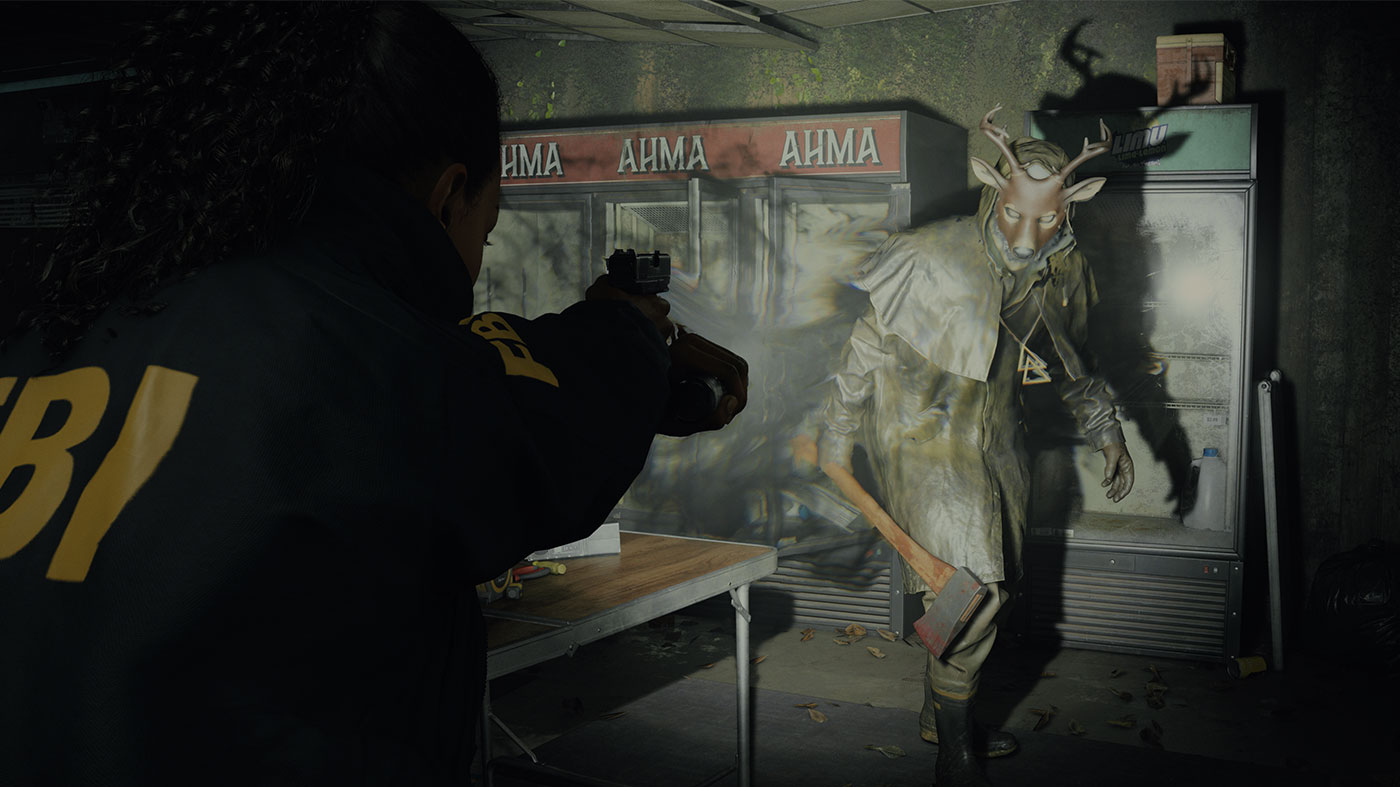
The game isn’t without moments where it funnels Taken at you en masse. However, on the whole, I feel that the way the shadowy forces are presented in Alan Wake II is far more menacing and more scary than before. Not only are there new varieties to combat, including some cool boss encounters, they exist more so as umbrous wraiths that tamely wander the street, gutturally calling out to Alan in passing. Not knowing which ones will violently lash out adds a level of unpredictability in simply wandering about.
With more than a decade of craft under its belt since the first game, Remedy certainly hasn’t rested on either its laurels or preconceptions of what a survival horror game should be. Saga’s Mind Place is perhaps the most fascinating of the new gameplay hooks, it’s a mental construct she’s able to retreat into to deduce based on case clues, effectively ‘Jedi mind trick’ suspects using a heightened ability to profile, but it’s ultimately useful for keeping everything laid out and clear for people following the intricate narrative and its many subplots. Similarly, Wake himself can make the writing room he’s spent so long in something of a safe haven to refer to the plot board. The first Alan Wake really sold the concept of the writer’s dastardly manuscript coming to life, though this plot board lets players massage the story on the fly based on fragments of a larger, fictional Alex Casey detective tale unfolding within The Dark Place. The game presents Alan’s supernatural prison cell as a malleable, twisted vision of New York, the novelist’s once home.
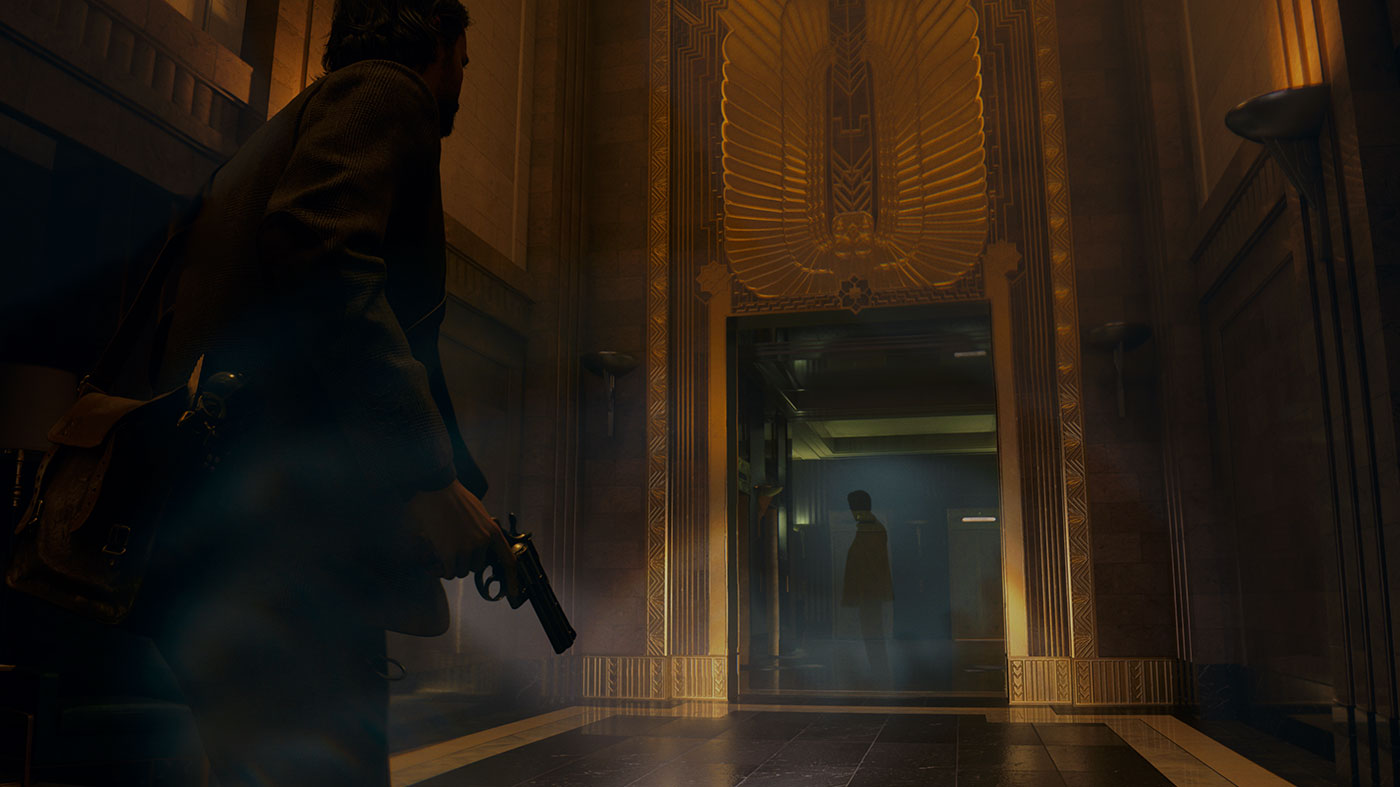
And just as picking a different story thread, like one surrounding a cult that ardently evangelises the written word, can open up new avenues for exploration within a scene, so too does Alan’s angel-winged lamp. Fans of the first game will recall the paranatural severed light switch and its magical properties, and this lamp is closely related to it. With it in hand, and while bathing in the safety of some light sources, Alan can morph the reality around him to put a twist on whatever part of the city he’s in. Despite at times leaving the way forward a little muddled and unclear, it’s a very cool, flashy mechanic that really shows off the virtually non-existent load times in the game. In fact, the only point I’d experience any kind of wait was when I’d hop from Alan’s story to Saga’s, or vice versa, but it didn’t exactly put a halt to the story’s momentum.
At times, the first Alan Wake felt like an endless stream of hiking trails. The world of Bright Falls, as well as Cauldron Lake and Watery, are far more fleshed out in this sequel, serving more so as larger, fully-mapped hubs that players can explore the more the story unfolds. To wander Bright Falls and learn there’s a Main St behind its harbour-facing facade was really neat. And with the way Remedy have become the modern custodians of the blending of live-action and pre-rendered gameplay, they don’t hold back with Alan Wake II. Just as in Control, actors deliver monologues regularly on top of the gameplay and it’s done to great effect, I was constantly marvelling at what an immersive storytelling aid it is. It also helps that the game is downright gorgeous. From the first moment we set foot back in Cauldron Lake, it’s evident that the environment design is first-class. I’d go so far as to say it rivals and outclasses many of the first-party heavyweights who’ve long buttered their bread thanks to stunning worlds to retreat into.
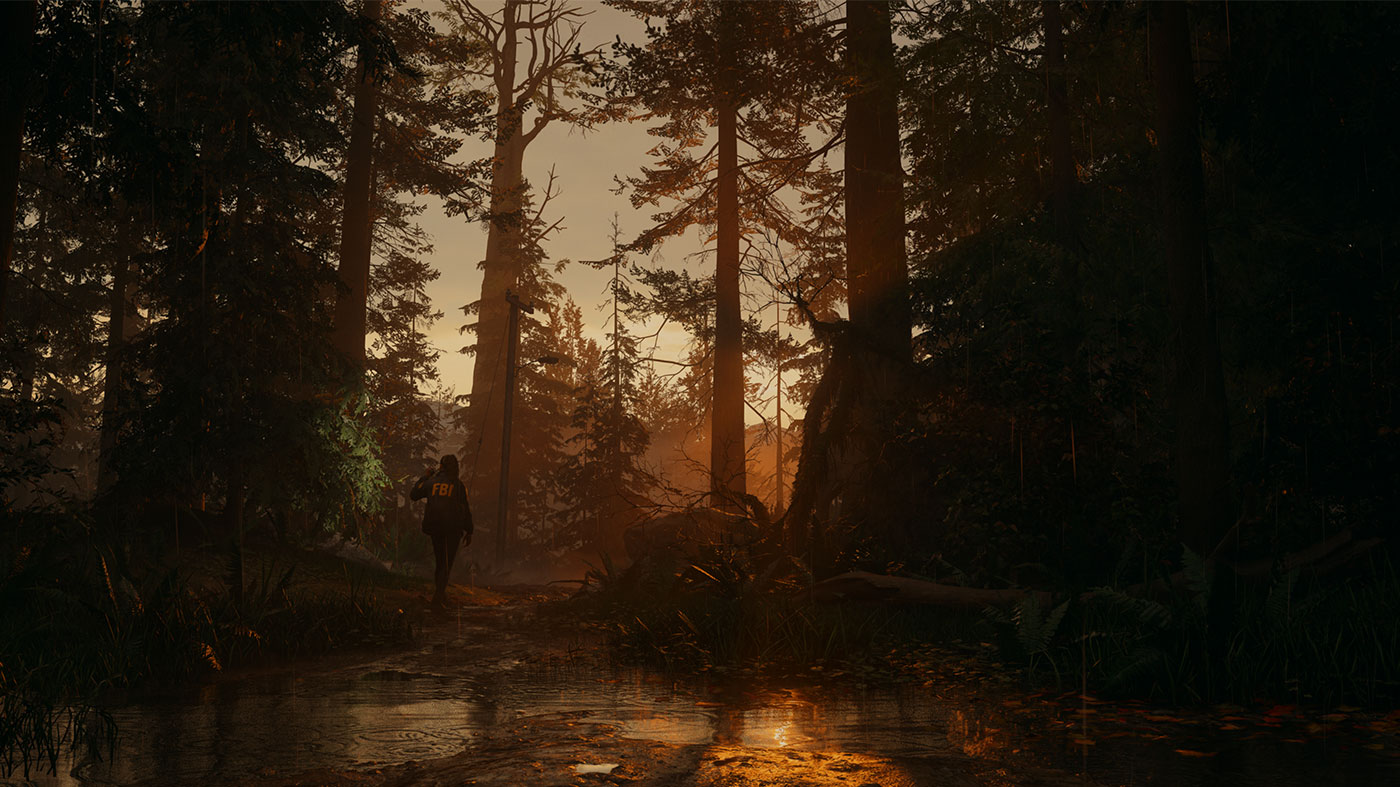
There were points that the live-action would transition back to regular play and I’d double-take because the fidelity is just so rich. Being able to capture acts so intimately has definitely allowed for some shining and standout performances from Villi, who returns as Wake with a little help from the venerable Matthew Poretta, as well as Lake and a couple of others I won’t note to protect readers from story spoilers.
You wouldn’t often catch me revelling in the fact that I had to wait just over a third of my lifetime, to date, for any video game. However, the fact is that an Alan Wake sequel made by any other Remedy than the one who, instead of dragging the dark waters of Cauldron Lake for an easy sequel, went on to create the universes of Quantum Break and Control while defining what it means to be a Remedy game, the end of Alan’s story might have sputtered out like a Stephen King ending.
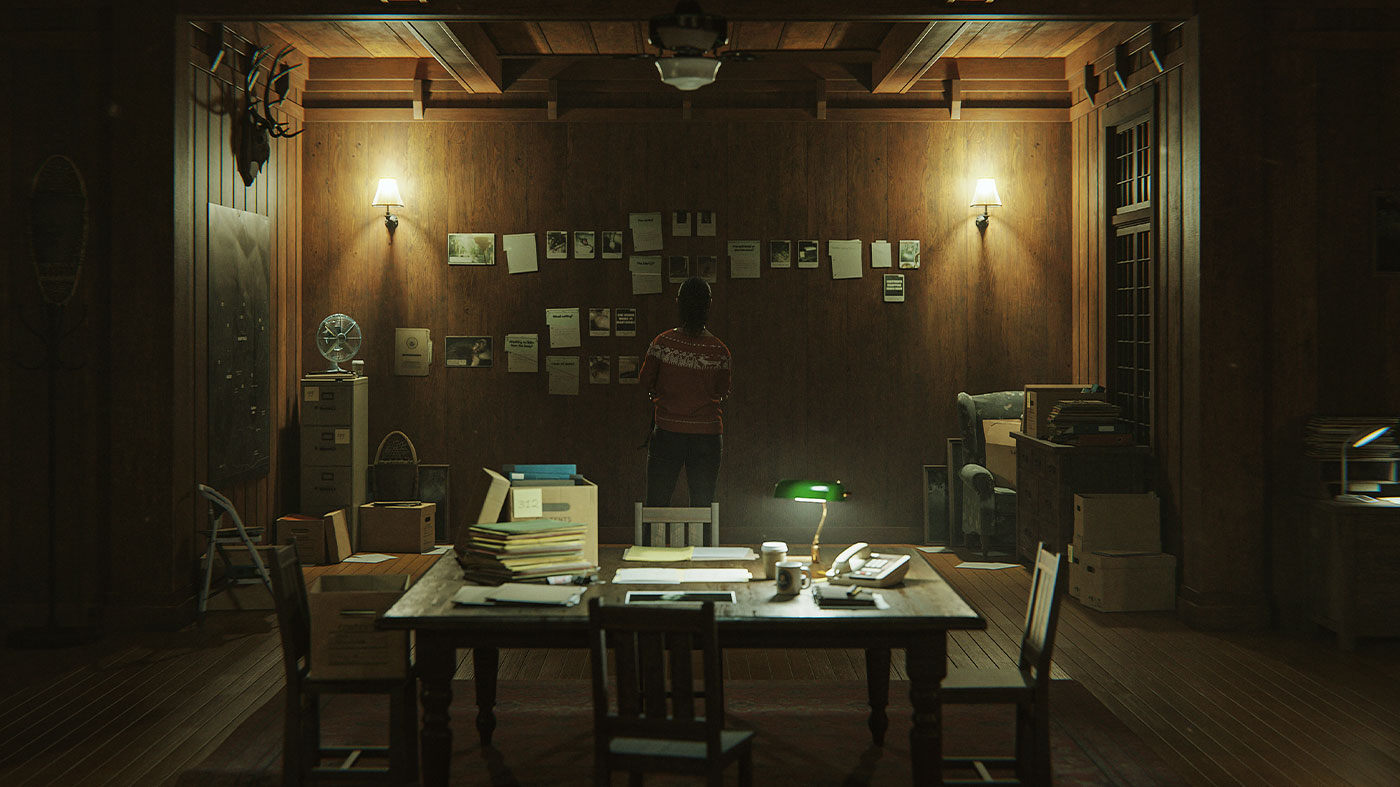
It’d be disingenuous for me to claim that Alan Wake II is the game I hoped it’d be because before Control I could never have predicted the pivots in tone and genre that the idea of Alan Wake has undergone. By leaning wholly into survival horror and connecting it to their bigger picture, universal plans, they’ve metaphorically put to press a bold, adventurous sequel that keeps the Lynchian sensibilities and zany humour of the original firmly intact.
The code for Alan Wake II was provided to Press Start Australia for the purpose of review by Epic Games and Remedy Entertainment.


